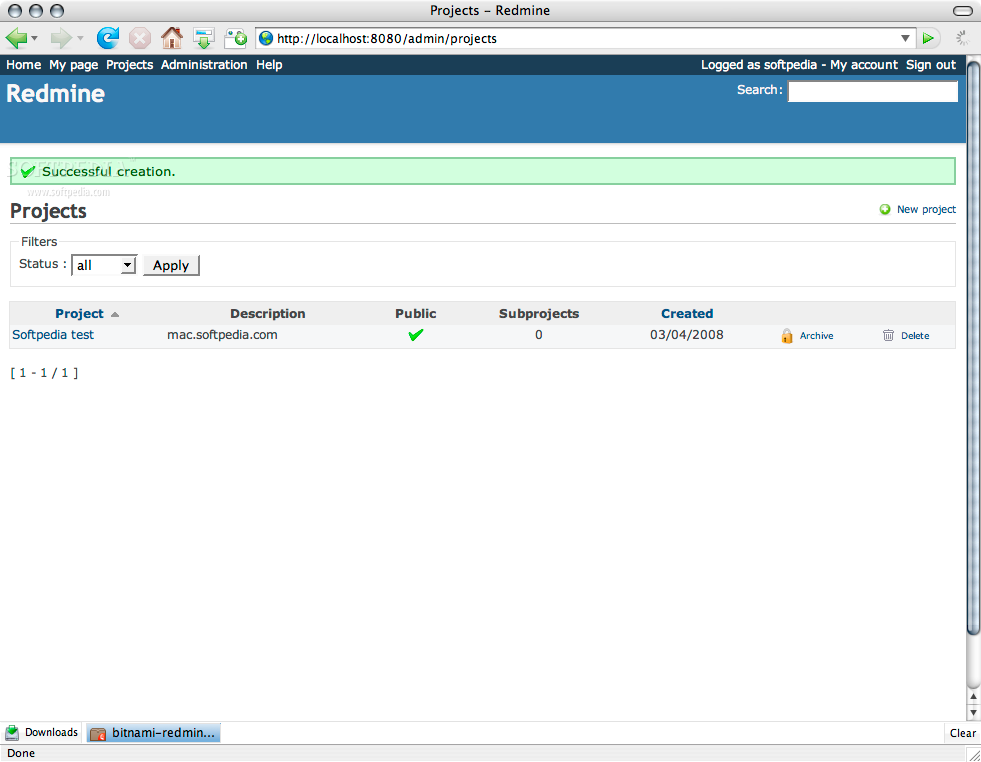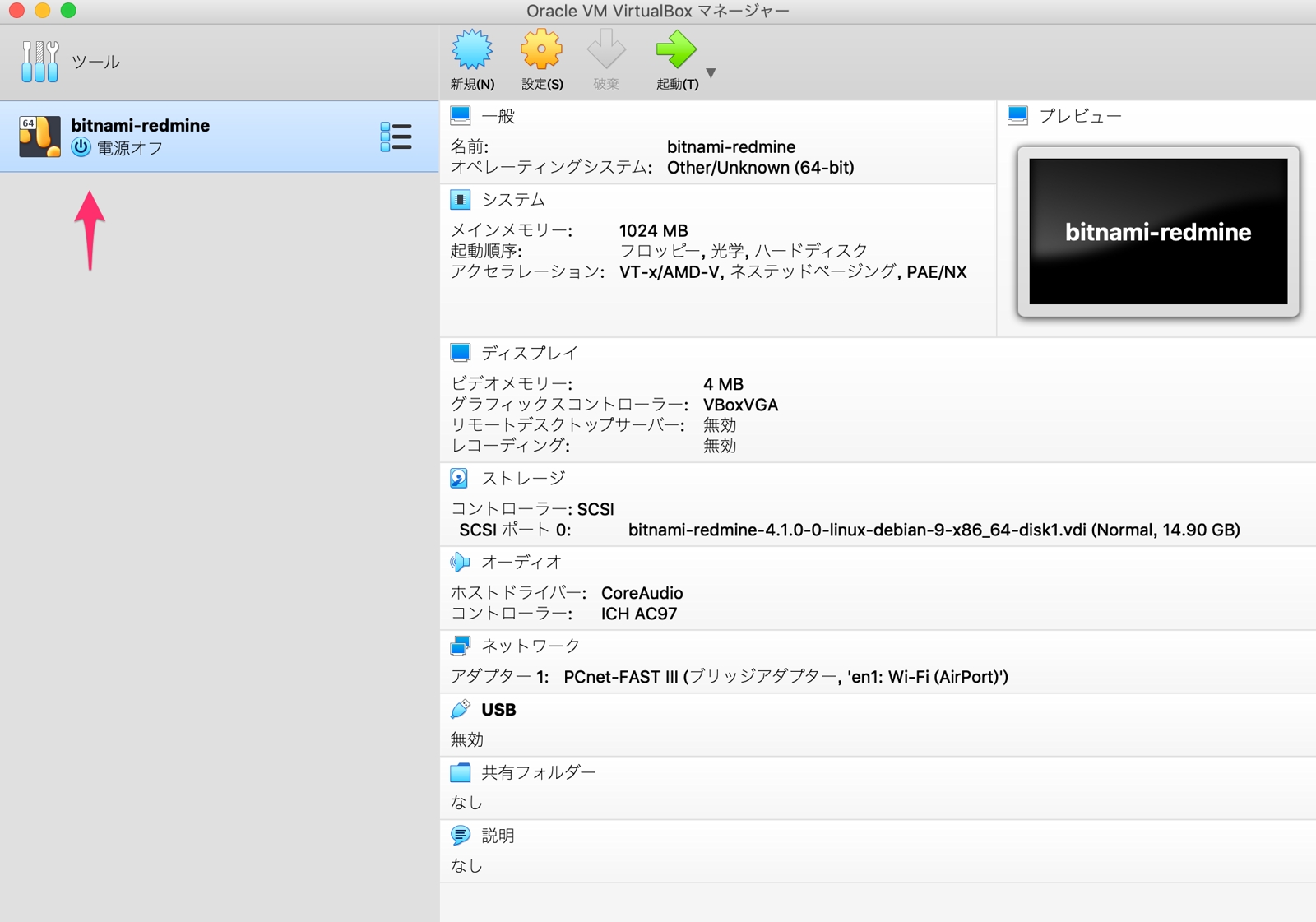

- #BITNAMI REDMINE ON VIRTUALBOX MAC OS X#
- #BITNAMI REDMINE ON VIRTUALBOX MANUAL#
- #BITNAMI REDMINE ON VIRTUALBOX FREE#
So as it turns out VirtualBox moved my network interface from eth0 to eth2. The first thing recommended on the Bitnami site was to run /etc/init.d/networking force-reload which resulted in an error "cannot find device eth0."Īnother informative piece of information was the "Ignoring unknown interface eth2″ message. I advise going to the Bitnami or VirtualBox sites and looking at their FAQ. If you are seeing your network interface you probably want to try something else as this is probably not your issue. For me I only had one interface and it was the lo interface. Luckily, there was a simple fix for this, but it took me a little while to figure out so I figured I'd share it here in hopes others with the same problem will wind up here and I can save you some time.įirst type ifconfig and see what comes up. Then it said "Continuing to wait for network configuration for another 60 seconds." Once the system started I noticed it didn't have a ip address assigned and if I typed ifconfig I only got the loopback interface (no network interface to speak of). When I tried to start up the virtual machine again it said "waiting for network configuration" and hung for about a minute. Users can deploy applications to a server size and configuration of their choice, within any Azure region and start, stop and delete servers directly from the console.I recently had my computer crash hard while my bitnami Ruby on Rails stack was running in VirtualBox. Deployment becomes as simple as selecting an application and a few mouse clicks.
#BITNAMI REDMINE ON VIRTUALBOX FREE#
The Bitnami Cloud Deployment Platform for Windows Azure is a free deployment console that helps customers to deploy server applications to Windows Azure. Today however Bitnami is launching a far more automated solution, and one which brings the Azure experience into line with the AWS one.
#BITNAMI REDMINE ON VIRTUALBOX MANUAL#
Across all the Bitnami channels, a million applications are deployed every month.Īt the moment, customers wanting to deploy apps on Microsoft Azure have to use a manual process through the VMDepot. There's an obvious value proposition here and one which customers are also seeing - according to Erica Brescia, co-founder of Bitnami, last year there was over 100 million run hours on AWS alone through Bitnami, and this doesn't include customers using Bitnmai to deploy applications to Virtual Private Clouds. But Bitnami does so in a way which is far more useful to SMB customers - by abstracting everything up to application layer away from the user, it makes customers' lives a heap easier. In some ways it's similar to the other cloud migration vendors who aim to wrap the entire application stack so that it can be moved between cloud vendors. Using Bitnami, customers can move apps across platforms - maybe develop on a laptop or local server and then deploy to production on AWS. It's also got an awesome story when it comes to avoiding lock in.
#BITNAMI REDMINE ON VIRTUALBOX MAC OS X#
Bitnami lets users put the apps anywhere - on Windows, Mac OS X and Linux operating systems, VMware or VirtualBox virtualized environments and the most popular cloud platforms such as Amazon Web Services (AWS) and Windows Azure.

Applications Bitnami covers include Alfresco, DreamFactory, Drupal, Ghost, JasperReports, Joomla, Liferay, Magento, Moodle, PrestaShop, Redmine, SugarCRM and WordPress, as well as popular developer tools and stacks such as Apache Solr, Django, Gitlab, Jenkins, JBoss, LAMP, Node.js, Ruby on Rails, Tomcast, WAMP and XAMPP. Bitnami achieves this by having around 100 different open source and commercial applications which can be installed and configured. Essentially the premise of Bitnami is simple - let users deploy the applications they want to use regardless of where they want to put them. Bitnami is kind of like the Boy Scout who helps the little old lady cross the street.


 0 kommentar(er)
0 kommentar(er)
